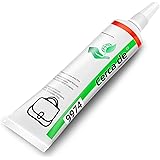Are you constantly searching for innovative ways to keep your children entertained and engaged without relying on screens? Finding activities that spark creativity and provide hands-on learning can often feel like a challenge. Fortunately, the world of do-it-yourself (DIY) projects offers a fantastic solution, transforming everyday household items into exciting playthings.
The video above showcases an impressive collection of 13 totally awesome DIY kids’ gadgets and toys, demonstrating just how simple it can be to craft imaginative play experiences. These homemade toys not only offer endless fun but also foster crucial developmental skills in children. From miniature sports games to sensory explorations and clever upcycled creations, the possibilities for crafting engaging activities are boundless.
Unleashing Creativity with DIY Kids’ Gadgets and Toys
Diving into the realm of homemade toys is more than just a way to save money; it’s an opportunity to cultivate a child’s imagination and problem-solving abilities. When children participate in making their own toys, they gain a deeper appreciation for the objects and the effort involved. Furthermore, these DIY projects often encourage open-ended play, which is vital for cognitive development. Simple materials can become the building blocks for complex scenarios and narratives, expanding a child’s world.
Creating these clever DIY kids’ gadgets and toys also teaches valuable lessons about sustainability and resourcefulness. Instead of discarding items like cardboard tubes, matchboxes, or plastic containers, they are given a new purpose, demonstrating the concept of upcycling. This process can help children understand the importance of reducing waste and thinking creatively about how everyday items can be repurposed. Moreover, the tactile experience of working with different textures and materials contributes significantly to sensory development.
Transforming Household Items into Playful Inventions
Many of the ingenious homemade toys featured in the video demonstrate how common household items can be given a fantastic second life. Imagine turning an old potato chip tube into a vibrant kaleidoscope or a fun storage solution, or even a simple office basket into an engaging mini-basketball hoop. Such transformations are not only cost-effective but also inspire children to view ordinary objects with a creative lens, fostering innovative thinking.
Consider the humble matchbox, for instance. While it seems insignificant, it can be repurposed into a charming “camera,” encouraging pretend play and storytelling. Similarly, simple cardboard can be shaped into an “easy spinner,” providing a satisfying tactile experience. These kinds of projects encourage children to think outside the box, seeing potential where adults might only see trash, thus honing their spatial reasoning and fine motor skills. Furthermore, the act of personalizing these items with paint, markers, or stickers adds another layer of creative expression.
Crafting Sensory Experiences and Interactive Play
Beyond simple constructs, DIY projects can also delve into sensory play, which is fundamental for early childhood development. The video briefly touches on creating a fantastic bubble machine, which can be made with basic ingredients like water, washing-up liquid, and sugar. This concoction offers a delightful visual and tactile experience, engaging multiple senses while providing hours of fun. Similarly, creating homemade “slime” from flour, food coloring, and water provides an incredibly satisfying tactile and visual experience, promoting exploration and scientific curiosity.
Moreover, interactive games like a “mini pool” or the “office basketball” setup exemplify how everyday items can be repurposed for active play. These projects promote hand-eye coordination, strategic thinking, and physical activity. Children are often drawn to the novelty of something they’ve helped create, making them more invested in the play. Developing these engaging DIY kids’ gadgets and toys fosters a sense of accomplishment and ownership, which can boost self-esteem.
Building Foundational Skills with Simple Materials
The materials required for most DIY kids’ gadgets and toys are surprisingly simple and accessible. Things like colored cellophane and laminating film, as shown for a “light sword,” can be transformed into visually stunning props that ignite imaginative adventures. Even a bit of Vaseline can be incorporated into certain crafts, demonstrating how varied materials can have different properties and uses. These projects expose children to basic scientific principles without them even realizing it.
Working with these materials, whether it’s cutting, gluing, mixing, or assembling, helps children develop essential fine motor skills. The precision required for tasks like measuring and combining ingredients for slime or a bubble solution also introduces rudimentary concepts of chemistry and engineering. Additionally, following instructions (or even devising their own) for these homemade toys strengthens their sequential thinking and problem-solving abilities, laying a strong foundation for future learning.
Embracing the Journey of Creative Discovery
Engaging children in the creation of DIY kids’ gadgets and toys is not just about the final product; it’s fundamentally about the process. The joy comes from the experimentation, the trial and error, and the satisfaction of bringing an idea to life. This hands-on approach teaches resilience and adaptability, as children learn that not every attempt will be perfect, but every attempt offers a chance to learn and improve.
By providing opportunities for children to make their own homemade toys, we encourage independence and a deeper connection to their play. These activities promote crucial parent-child bonding moments, offering a shared experience of discovery and creation. Ultimately, fostering this spirit of invention through simple DIY projects equips children with a lifelong love for learning, creativity, and resourceful thinking.







